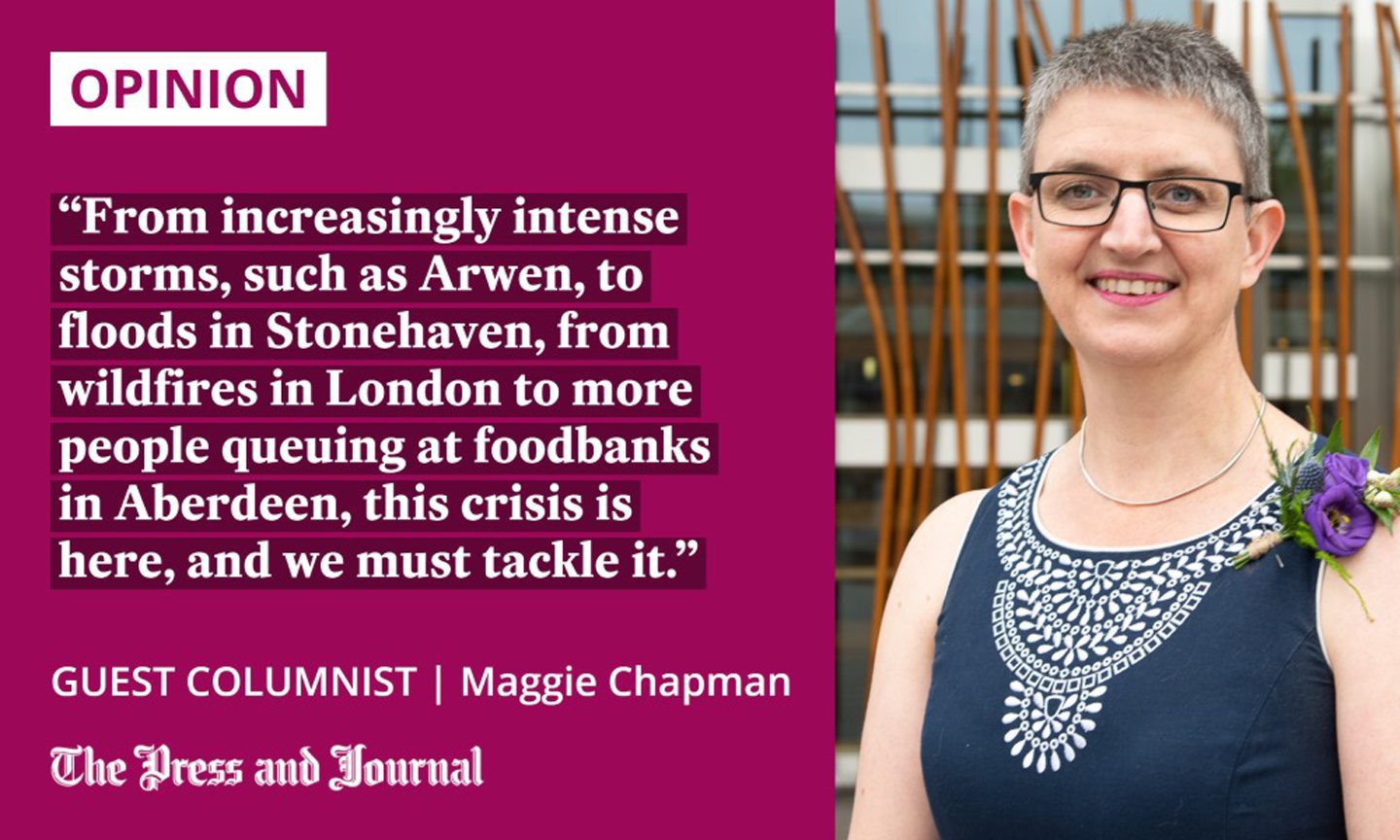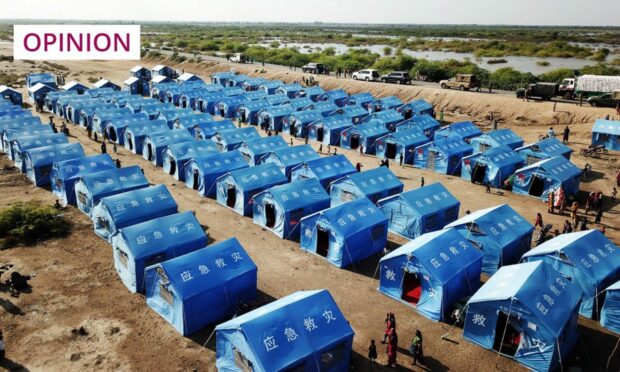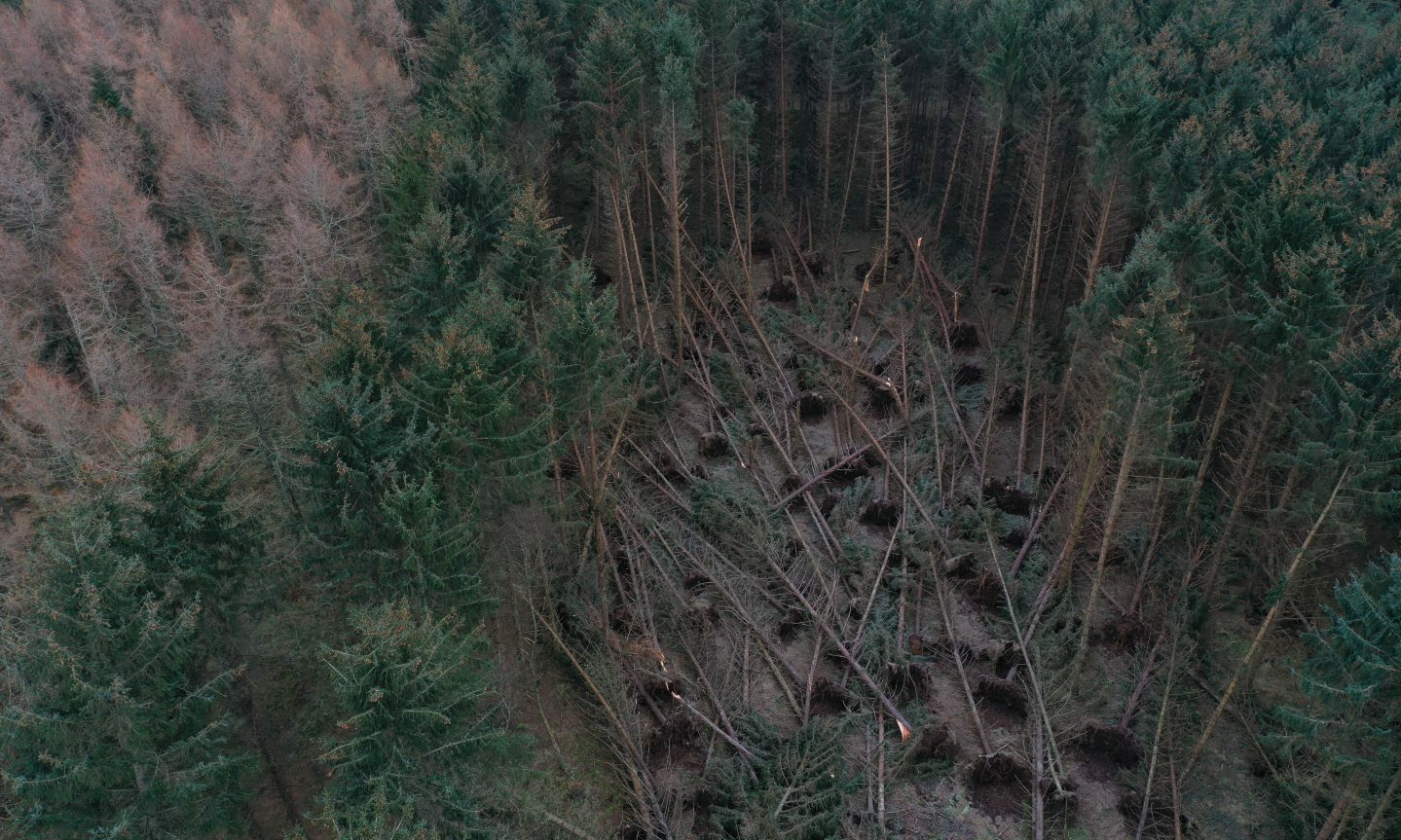Autumn has finally arrived; a nip fills the air and the rustle of leaves can be heard underfoot.
As one season ends and the next begins, it seems a good time to reflect.
The summer has been strange. As the sunshine beamed on us, bringing relief from the wet of spring and the dark of winter, light was also shone on something more sinister.
News outlets and social media have brought us images of fire and flood. Many brace themselves for the harsh winter ahead; memories of Storm Arwen still linger across the north-east. The cost of living crisis – a crisis of greed – hangs ever-present over our communities, too. The climate and ecological crises are tied to this threat.

Climate projections for 2050 have arrived in 2022. The worst heatwave in Europe in 500 years, a heatwave in China that was the most severe ever recorded in the world, and the worst flooding in Pakistan’s history.
The floods there resonated with me. During my election as rector of the University of Aberdeen, I ran alongside Israr Khan, a bright and passionate law student and activist from the Balochistan region of Pakistan, one of the worst affected areas. He witnessed a man drowning and whole villages swept away by the water. To see and hear of such death and devastation is harrowing.
50 million people displaced and over $30b of damage
The crisis there is ongoing, with the Disasters Emergency Committee (amongst many others) calling for aid to assist the people of Pakistan. I wrote to them to find out more about the work they are doing there.
Their response was detailed and swift, explaining the regions they are focusing their relief efforts on, the member charities involved, and alluding to the cause of this catastrophe: climate breakdown.
For Pakistan, the extremes of drought and flood are expected to increase. Rising temperatures parch the land, baking it hard, reducing freshwater resources and damaging crops. This hot weather also increases the melting of mountain glaciers in the north of the country, as well as boosting the volume of water held in the atmosphere.
"Our family home collapsed due to the floods. There is nothing left of our belongings''
Aqsa *, is a 57-year-old member of a community affected by excessive monsoon rains and flooding.
There are many like Aqsa that still need help, please donate now: https://t.co/LjAgNYHFSs pic.twitter.com/dpLIuSY2mD
— DEC (@decappeal) October 6, 2022
When rain does come, it comes down hard, meeting the melting glacial waters and the baked land – a recipe for flash flooding. The scale of this is truly shocking, with 50 million people displaced and over $30 billion of damage to the economy.
Acclaimed author of books such as The Runaways and New Kings of the World, Fatima Bhutto, said: “This is a tragedy of nightmarish proportions and yet if you live outside Pakistan, you probably haven’t heard much about it.
The consequences of our actions, such as oil and gas production in the North Sea, once seemed to only happen in far and distant lands
“Given its near total lack of interest in the fate of Pakistan, it would seem that the rest of the world hasn’t considered that this epic humanitarian crisis is a peek into the apocalyptic future that awaits us all.”
All of this has added to the growing cost of living crisis, through crop failures and livestock killed, ramping up global food prices.
It’s time to listen to the warning
The consequences of our actions, such as oil and gas production in the North Sea, once seemed to only happen in far and distant lands. However, now it is here, in our own communities. The climate crisis has come home.
From increasingly intense storms, such as Arwen, to floods in Stonehaven, from wildfires in London to more people queuing at foodbanks in Aberdeen, this crisis is here, and we must tackle it.
The £500 million Just Transition Fund that Scottish Greens have secured for north-east communities, through the Scottish Government, is just the start of the action needed.
The government with the powers and resources available to truly tackle both the climate and cost of living crises sits in Westminster. They need to nationalise the big five energy companies, halt oil and gas expansion, and provide secure, insulated homes for everyone. They need to support people here but also act with compassion abroad.
The horrors faced by Pakistan today warn of the consequences of climate breakdown for us tomorrow. It is time we listened to – and acted on – this warning.
- You can donate to the Pakistan Floods Appeal here: dec.org.uk/appeal/pakistan-floods-appeal
Maggie Chapman is a Scottish Green MSP for North East Scotland


Conversation